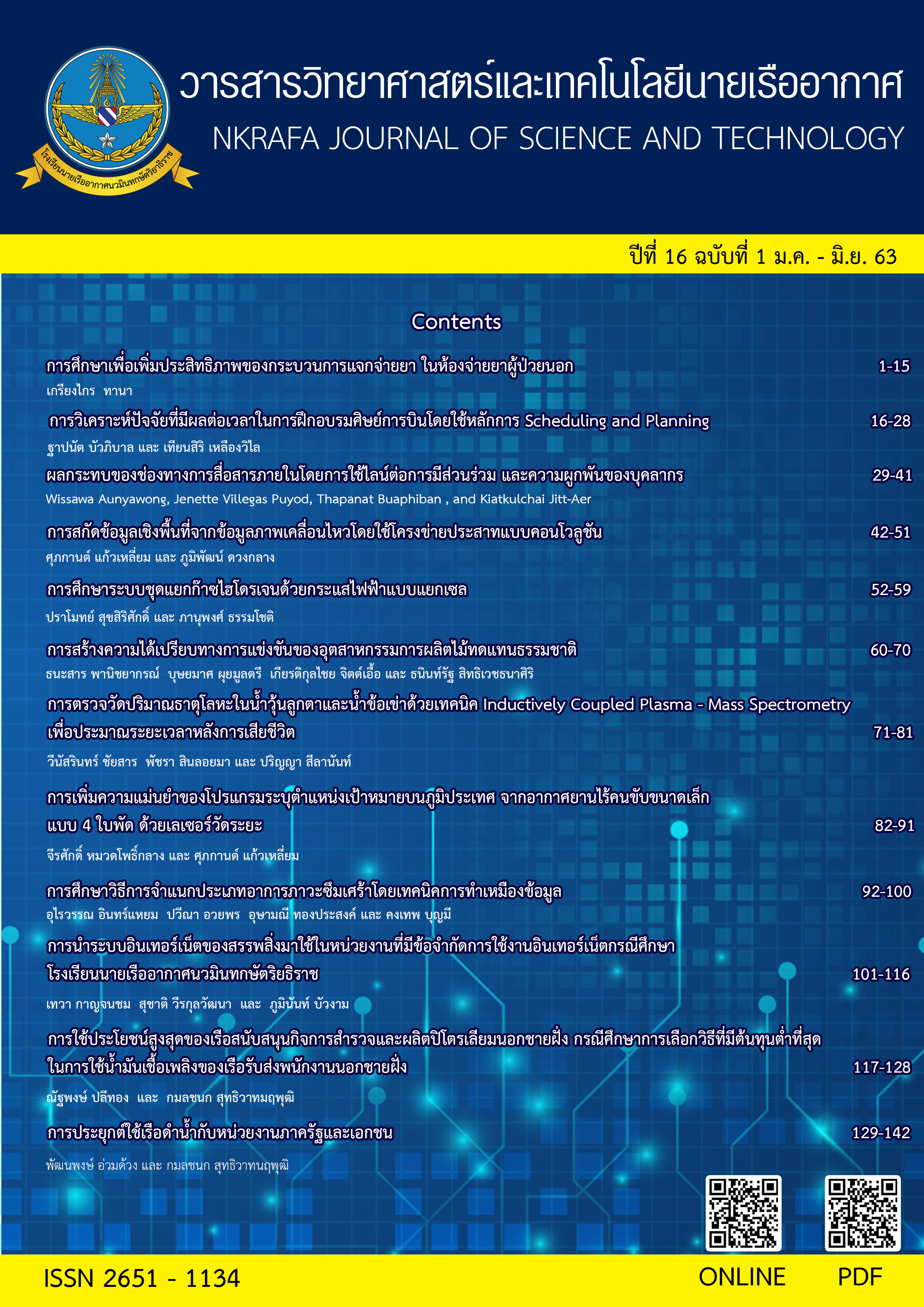The Implementation of Internet of Things system for restricted of internet access organization. Case study Navminda Kasatriyadhiraj Royal Air Force Academy
Main Article Content
Abstract
To implement an Internet of Things (IoT) system within the Navaminda Kasatriyadhiraj Royal Air Force Academy (NKRAFA) is hardly possible. IoT is not a personnel, does not have the right to occupy any internet account, cannot authenticate to internet access, those lead to disability to communicate any data to the internet. The users from internet then cannot control the internal IoT. This research purposed to solve this problem using nkrafacs.rtaf.mi.th server which can be accessed from both the internet and in campus internally including from the IoT system without any internet access authentication required. The nkrafacs.rtaf.mi.th server provides Web server and MySQL Database server which is in charge of Data Intermediate between internet users and IoT device.
This research uses ESP-01s and ESP Relay Module programmed with Arduino language to simulate an IoT system to control switching on/off a lamp. The user control is a control panel web page programmed with PHP language. Users can open that page using browser available on mobile phone or tablet PC or computer. The research has succeeded with the result that users with internet accessibility from anywhere can control the IoT which can switch on or off the lamp installed in NKRAFA. This can solves the problem of the research successfully.
Article Details
- Content and information in articles published in NKRAFA Journal of Science and Technology are comment and responsibility of authors of articles directly. Journal editorial do no need to agree or share any responsibility.
- NKRAFA Journal of Science and Technology Articles holds the copyright of the content, pictures, images etc. which published in it. If any person or agency require to reuse all or some part of articles, the permission must be obtained from the NKRAFA Journal of Science and Technology.
References
2. ประเสริฐศักดิ์ อู่อรุณ. (2561). การออกแบบและการดำเนินการรวบรวมข้อมูลสำหรับอุปกรณ์อินเทอร์เน็ต ของสรรพสิ่งเพื่อบ้านอัจฉริยะ. Veridian E-Journal, Science and Technology Silpakorn University, 5(3): 53-63.
3. ไพโรจน์ เหลืองวงศกร, วรพล ลีลาเกียรติสกุล, สุรณพีร์ ภูมิวุฒิสาร, พัชวรัทย์ พิพัฒน์ธนอุดมดี. (2560). การประยุกต์ใช้ ESP8266 สำหรับระบบรักษาความปลอดภัยที่บ้าน. วารสารวิทยาการและเทคโนโลยีสารสนเทศ มหาวิทยาลัยเทคโนโลยีมหานคร, 7(2): 44-55.
4. กิตติเชษฐ์ นนทะสุด, พีรพนธ์ ตัณฑ์จยะ. (2562). ระบบควบคุมการใช้พลังงานไฟฟ้าภายในห้องเรียนแบบอัตโนมัติ ด้วยเทคโนโลยี Internet of thing: กรณีศึกษามหาวิทยาลัยอีสเทิร์นเอเชีย. วารสารวิชาการมหาวิทยาลัยอีสเทิร์นเอเชียฉบับวิทยาศาสตร์และเทคโนโลยี มหาวิทยาลัยอีสเทิร์นเอเชีย, 13(1): 159-171.
5. วอนชนก ไชยสุนทร. (2558). Internet of Things เมื่อทุกสิ่งเชื่อมต่ออินเทอร์เน็ต. วารสารครุศาสตร์อุตสาหกรรม คณะครุศาสตร์อุตสาหกรรมและเทคโนโลยี สถาบันเทคโนโลยีพระจอมเกล้าเจ้าคุณทหารลาดกระบัง, 14(2): 727-733.
6. โอฬาร เชี่ยวชาญ, อนุกิจ เสาร์แก้ว. (2560). การบูรณาการประยุกต์ใช้ RFID (Radio Frequency Identification) และ iOT (Internet of thing) ผ่านระบบคลาวด์(Cloud Computing) สำหรับการจัดการโลจิสติกส์. วารสารวิชาการคณะเทคโนโลยีอุตสาหกรรม มหาวิทยาลัยราชภัฏลำปาง, 10(2): 109-119.


